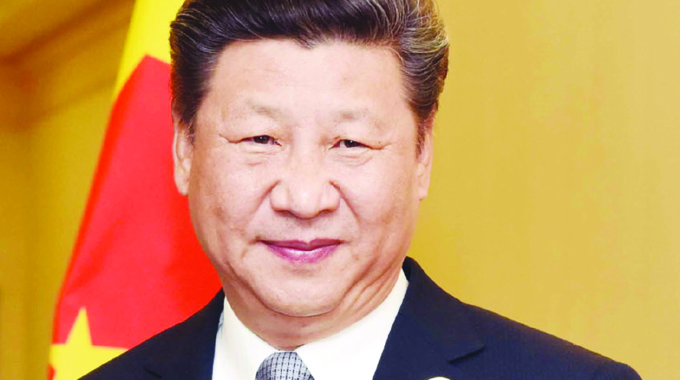China’s new pattern good for global economy

Guo Shaochun Chinese Ambassador
At a recent meeting on domestic economic developments, Chinese President Xi Jinping urges the country to accelerate the establishment of a “dual circulation” development pattern in response to the uncertainties and problems in the medium and long run,
First articulated in May this year, “dual circulation” seeks to make China’s domestic cycle the leading force for its economic development, and the international cycle an extension and supplement.
It puts the focus on fully utilising domestic resources to empower the economy while continuing with the opening-up efforts.
This marks a difference from the past practice of heavy reliance on external demand and production factors.
It also calls for greater modernisation of the industrial and supply chains, scientific and technological innovation, and breakthroughs in core technologies in the country.
Sensible decision long in the making
This is not a hasty decision, but a strategic choice mulled for years.
Since its reform and opening-up program began in the late 1970s, China has actively participated in the global value chain, achieving rapid growth on the back of low costs of production and an export-oriented strategy. But this was not without its problems.
Over-reliance on foreign trade, economic security risks, restrictions on key technologies, and lack of industrial sophistication are among the most outstanding.
Starting from the 1998 Asian financial crisis, China has began to look more to its domestic market for sustained momentum of growth.
Exports as a proportion of China’s economic activity have been shrinking for years, while domestic consumption is playing a bigger contributor, a sign of growing maturity of the economy.
As Covid-19 wreaks havoc across the world, trade protectionism is on the rise in some countries; the global industrial and supply chains may experience remarkable changes. It is in this milieu that the new development pattern is reaffirmed.
It reflects China’s long-term development strategy and changes in the global economic landscape. China remains open and will be better integrated into world economy
Does this mean China is pivoting away from global economic integration? Far from it. Chinese President Xi Jinping states unequivocally that “the ‘dual circulation’ is by no means a closed domestic loop”.
Read full article on www.herald.co.zw.
Noting that growing interconnectedness of economies is a must for world economic growth, he underlines the importance of openness as a crucial force for China’s sustained development.
“Promoting openness is China’s basic state policy. We must better open up to the world and build a more sophisticated open economy.” “China is ready to work with any country, region or enterprise that is willing to work with China, including US states and businesses.”
A more mature and brisk domestic market in China will naturally need more imports and welcome more foreign investment. Last year, China’s imports were valued at 1431 trillion yuan, making it the world’s second-largest importer for 10 consecutive years. By 2019, China’s overall tariff level had dropped below 7,5 percent, lower than that of most countries in the world and close to the European level; it is expected to continue to fall. Some economists believe by 2035 China’s annual imports of goods and services could exceed US$40 trillion. The opportunities for global trade and the world economy cannot be underestimated.
A more stimulated domestic circulation will also integrate China deeper into the world economy. To unleash the full potential of the domestic market, China will break down regulatory and other institutional barriers, adopt more international practices, and connect the dots of production, distribution, and consumption together into an integral market system. Such a unified, rules-based market will be able to interact more closely with the world economy.
A more balanced and inclusive economic globalisation
Covid-19 has reinforced the headwind against globalisation. Protectionism and unilateralism are reasserting themselves. Some are concerned if China’s “dual circulation” means a retreat from globalisation.
China is firm in its belief that economic globalization is an irreversible trend of history, independent of our will. It has also greatly boosted prosperity and human development over the years. Yes, there have been pitfalls. But the job of policy makers is to find a way to preserve the benefits of globalization while addressing its negative consequences.
China is a bridge on the global value chain, with advanced economies on the one side and the developing ones on the other. Stronger interaction between its domestic and international cycles makes China a more integral part of the global value chain. This promises to facilitate industrial relocation worldwide and the global division of labour. These trends generally result in better provision of goods and services, greater global economic integration and specialisation, and more people in emerging and developing countries participating in global economic exchange.
In a similar vein, Zimbabwe is embracing the importance of its domestic market due to the Covid-19 pandemic and national lockdown and deeper regional integration led by SADC and COMESA.
Synergy will come from our two countries connecting our respective policies. It is therefore important that we step up communication to identify opportunities offered by these strategies, breathing new life into our most valued partnership.
Since the 1970s, China has been one of the fastest growing countries in the world, contributing more than 30 percent to world economic growth for more than 10 consecutive years.
“Dual circulation” is set to further cement the foundation for the sustained growth of the Chinese economy and encourage more energy, balance, and inclusiveness in economic globalisation. The immense opportunities are there for all international partners to explore to the benefit of themselves and the world as a whole.










Comments